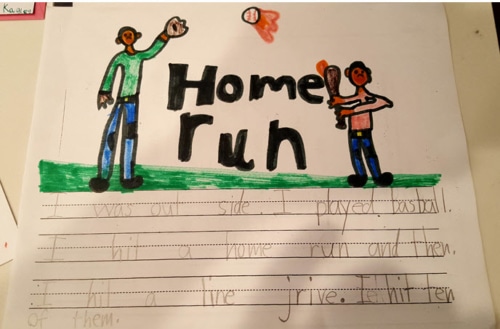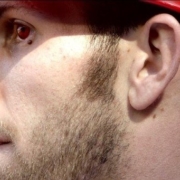Discover pro batting stance weight shift, transfer, and distribution on the back foot for baseball and softball swing. Learn how to see which stride hitting drills work and which do not.
How To Make Teaching Proper Weight Shift In Swing More Understandable To Hitter
Here’s the Hitting Jam Session Interview Collection with Perry Husband:
- Why You Should Not Teach Hitters To Hit Homers?
- What’s The Biggest Mistake Coaches Make In Boosting Ball Exit Speeds
- [YOU ARE HERE] How To Make Teaching Proper Weight Shift In Swing More Understandable To Hitter
- Teach: How To STOP Hitting Excess Of Ground-balls & Fly-balls
- 5,000 Swing Experiments Validate Locked Lead Arm Is Superior To Bent
- Overload Bat Training: Hitting Has To Work Butt Off To Resist “Casting”
Here’s what we discuss in this episode:
- Answered: “Making teaching of proper weight shift in your swing and more understandable to the hitter?”

- 1000’s of swing experiments confirm benefits of releasing backside: higher Ball Exit velocity, better ball flight, and swing consistency,
- How to fix hitters that over stride,
- Why ‘force plate’ studies DO NOT mean a darn thing, unless they correlate these two critical metrics,
- And much more!
CLICK HERE for the full Facebook LIVE video and conversation.
SCIENCE-BASED TRAINING:
Improve your hitting strategy dramatically by applying human movement principles.
Learn not only how and what to train but also the science behind the methods.
Show Notes
- At about the 4-minute mark, what’s missing with current hitting philosophies and what is effective and what is not, filtering through the white noise, Science v. bro-science testing,
- At about 6-minute mark, What’s #1 struggle with teaching hitting right now? We answer reader question, “Making teaching of proper weight shift in your swing and more understandable to the hitter?” getting off the back foot, foul ball rate goes down significantly by releasing the back foot, increase in exit velocity when releasing the back foot, Perry’s 10,000 swing tests show these same things, take bat out of hand and try similar movements – i.e. lightly playing catch will allow back foot to “push” and “turn”, forward momentum and rotation, anything you can do to get the backside to release is great to model what we want them to do swinging.
- At about 10-minute mark, the challenge with teaching hitting mechanics, some players (Rachel Garcia was mentioned) easier to demonstrate then do, what kind of learner that player is (seeing, hearing, feeling), throwing motion (feel learner), video or demonstration (visual), “release-mechanism” that ‘clicks’ hitting aid would be cool for an audio learner.
- At about 13-minute, 30-second mark, Jim Macarelli responded, “the difference with throwing though as you know is the weight ends up on the front foot.” Centrifugal (center fleeing) v. Centripetal (center seeking), imagine throwing uphill versus throwing downhill, will be harder to get off your backside throwing up hill, not over front side – up against it when hitting, not every player gets off their backside, don’t take our word for it – test it!! Exit velocity, ball flight, and consistency all get better releasing the back side.
- At about 17-minute mark, sure BAD Science is out there, here’s the key with Science, with what you’re doing – can that end result or outcome be replicated a majority of the time? Bryce Harper WaPo article addressing biomechanics of shifting weight into the ball, squishing bugs and backside hitting transfers only 75% of hitter’s bodyweight VERSUS releasing backside and transferring 150% of bodyweight into impact, Perry’s swing experiments found a 6-mph increase in Ball Exit Speed, bat speed during back foot skip releases much closer to impact whereas a backside weighted swing top out bat speed is sooner than impact,
- At about 21-minute 30-second mark, dumping barrel right in front of catcher’s glove regardless of pitch depth is DANGEROUS for hitters career-wise, causes big loop in swing and hole up in the zone, Hank Aaron, Rod Carew, Roberto Clemente all released the back foot, Jim Macarelli asks “I think the challenge with teaching kids is we want them to stride and shift their weight forward, but we want them to FINISH with their weight back, not stay back throughout the swing… if that makes sense. Timing clearly effects the back foot. When of time the backside releases and when late, often not.” Hitters like Babe Ruth and Ted Williams released the back foot, then fell back onto back foot during finish, release first, then fall back,
- At about 25-minute mark, how do we control our hitters from over-striding, belly button is our center of mass, axis of rotation during front and back flips, using variance to teach hitters not to over-stride: stride with belly button finishing over front knee at landing, then stride and land with belly button behind back knee, then stride keeping belly button in the center of legs, then stride keeping belly button behind front knee, then lastly stride keeping the belly button inside the back knee, all about locomotion, Tai Chi and shifting bodyweight, to do a lunge to the right – I have to shift my weight left to move to the right (and opposite for the opposite direction), Perry talks about the Reebok core board
(feedback tool), experimenting with weight shift – downhill versus uphill, using Power Up Wedge
- At about 31-minute 30-second mark, Nassim Talib’s book Antifragile
– the majority of invention and innovation in history stems from tinker and testing NOT research and study, aspirin, penicillin as examples, Mike Ryan from Fastball USA has some great variance or chaos training stuff, David Weck and his Bosu Ball
, striding uphill/downhill, try different things, tinker test, 3-D Hitting, Perry going to do stuff with University of Oregon softball, WARNING with some of these “force plate” tests: if it doesn’t include ball flight and exit velocity we don’t want to talk about it, how can we make any kind of conclusion from the data without that? Is happening off tee or LIVE pitching, releasing or spinning on backside, MYTH: the more ground force created is better, how does that translate to ball exit speed and ball flight?
- At about 38-minute, 30-second mark, how to do these swing experiments, changing one swing variable at a time, then re-test, can take ANY hitter do a control round, change, and re-test to see how the change affected the control swings, Frosh softball High School player did over/under load training ONLY in a 6-week span, after re-testing went from 55-mph BES (control) to 62-mph, whoever you follow hitting guru-wise, get control swings, make the change, re-test, and see how BES and ball flight changed – for better or worse, what’s your main objective teaching hitters – high hard contact rate? Decrease strikeouts?
- At about 44-minute mark, Perry talks about how effective or ineffective were the 2-strike adjustments Joey Votto made, CLICK HERE for Perry’s analysis article on this, in 2-strike counts: balls fouled back, swung and missed, etc. were balls he could have done damage with, can elite hitters foul balls off on purpose, Votto wasted so many good pitches with a less aggressive approach with 2-strikes, when Perry worked with Carlos Pena in 2009: K’s went down 25%, BA went up 25%, 2-strike BA went from .185 to .240, tripled his output with 2-strikes, Votto approach didn’t make much sense – he may have cut down on his K’s but his production went way down compared to before the change, reactionary hitting will die with EV efficient pitching, Joey Votto FanGraphs article, “Joey Votto Has Just Simply Stopped Striking Out”
- At about 52-minute mark, discuss how poorly hitters will do when pitchers get more EV efficient, CLICK HERE for a video Perry did analyzing Chris Davis (of the Orioles), perfect example of a hitter gearing his swing to about a stubborn 6-mph EV zone regardless of pitch type, location, or speed, all 50-something of the homeruns he hit pitchers ran the ball right into his bat, when target rich environment goes away (pitchers throwing balls into barrel), it’s going to be a cold dark day in hitting, adjust or die, Carlos Pena’s chase rate went down 18% in 2009, changing the physical can take time (Perry suggests 3-4 months for more entrenched habits) – my research suggests 66-days to change a habit.
- Find Perry Husband at HittingIsAGuess.com, use EV25 coupon code at checkout for online video courses. If coupon code doesn’t work, then contact Perry and he’ll reset for you.
- My offer…FREE Catapult Loading System 2nd edition print book – just pay $8.95 shipping and handling (retails on Amazon for $19.97) – in addition you’ll get our essential consistent power online video mini-course Power Hitter 2.0: Engineering The Alpha: https://www.truthaboutexplosiverotationalpower.com/pl/60039






















